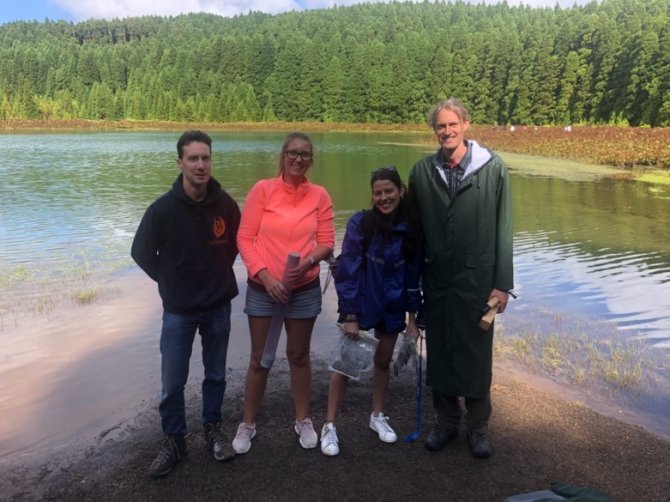Blog post
Life in hot springs – why hot springs are not just fun to bathe in
With a length of about 65 and a width of 16 kilometers, São Miguel, the largest island of the Azores, spans a wide range of different landscapes and wildlife. Until today its volcanic origin is shaping life on the island and was the reason for an MIB sampling trip to São Miguel in September 2021.

Clues to the evolution of life
The smell of sulfur, a vague sound of upstreaming gasses and the loud noise of seething water are good indicators for being close to a site where heat, fluids, or gases from the inner part of the Earth are reaching the surface. The steaming waters of the island of São Miguel’s thermal regions truly are a natural wonder, and not just because of their beauty. Once thought to be empty of life, and solely being used for human entertainment and relaxation, these hot springs are in fact teeming with microbes that hold clues to the evolution of life on our planet, but also for designing and improving existing biotechnological and industrial processes.

Exploring microbial life
Under these extreme conditions, microorganisms not only survive, but also make use of the gases and compounds that reach the Earth’s surface. Yet, the diversity, lifestyle, and role in evolutionary processes of the bacteria and archaea living in the different thermal environments across the Azores are to date only poorly characterized. At the same time, they might harbor a great potential for biotechnological and industrial processes that involve the consumption of gases and withstanding high temperatures. Therefore, members of the working groups from Molecular Ecology, Microbial Physiology and Microbial Evolution went on a joint sampling trip to explore microbial life in the Azores.
The sampling trip in numbers
Supported by the local university, 4 members of MIB spent 14 days on São Miguel, visited 21 different locations that included 184 sites and took 933 individual samples. Collectively, about 40 kg of sample material were taken back to Wageningen and are now waiting to be analyzed and used for cultivation efforts or microscopy. While the largest part of work is still yet to come, the sampling trip to São Miguel can certainly already be declared as 1 great example of collaborative work across the Laboratory of Microbiology and sets base for various future research projects.
Research projects
Are you interested in doing an MSc or BSc project working with samples from the Azores? Check out the projects offered:
- Cultivating Asgards eukaryotes' closest relatives
- Chasing uncultivated Archaea from genomics to cultivation
- Isolation of novel thermophilic carboxydotrophic microbes for syngas bioconversion
